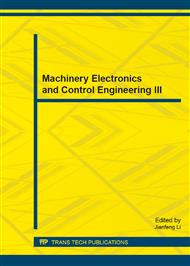p.281
p.286
p.291
p.295
p.300
p.304
p.312
p.318
p.324
The Calculation of Line Fault Probability in Ice Storm
Abstract:
In this paper a line fault probability calculation method by the combined effects of icing and wind is developed. Considering the force effect of icing and wind on the transmission lines, an icing-wind load is presented. It can be used to calculated the real-time or predict line fault probability using the characteristic exponential model reflecting metal resisting capacity. The example using historical meteorological data and simulating grid is given and the results show that, icing-wind load presented in this paper makes the calculate result of failure probability more serious. The line fault probability is helpful for the further grid security control.
Info:
Periodical:
Pages:
300-303
Citation:
Online since:
December 2013
Authors:
Keywords:
Price:
Сopyright:
© 2014 Trans Tech Publications Ltd. All Rights Reserved
Share:
Citation:


